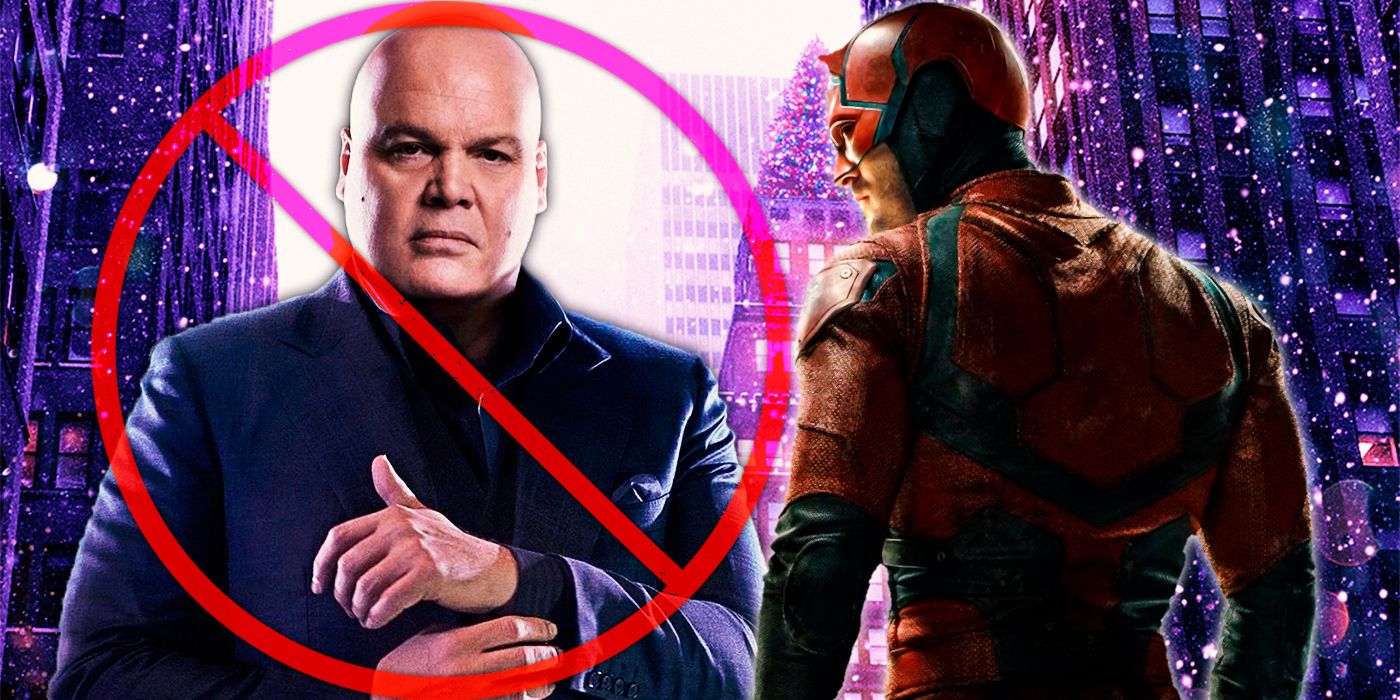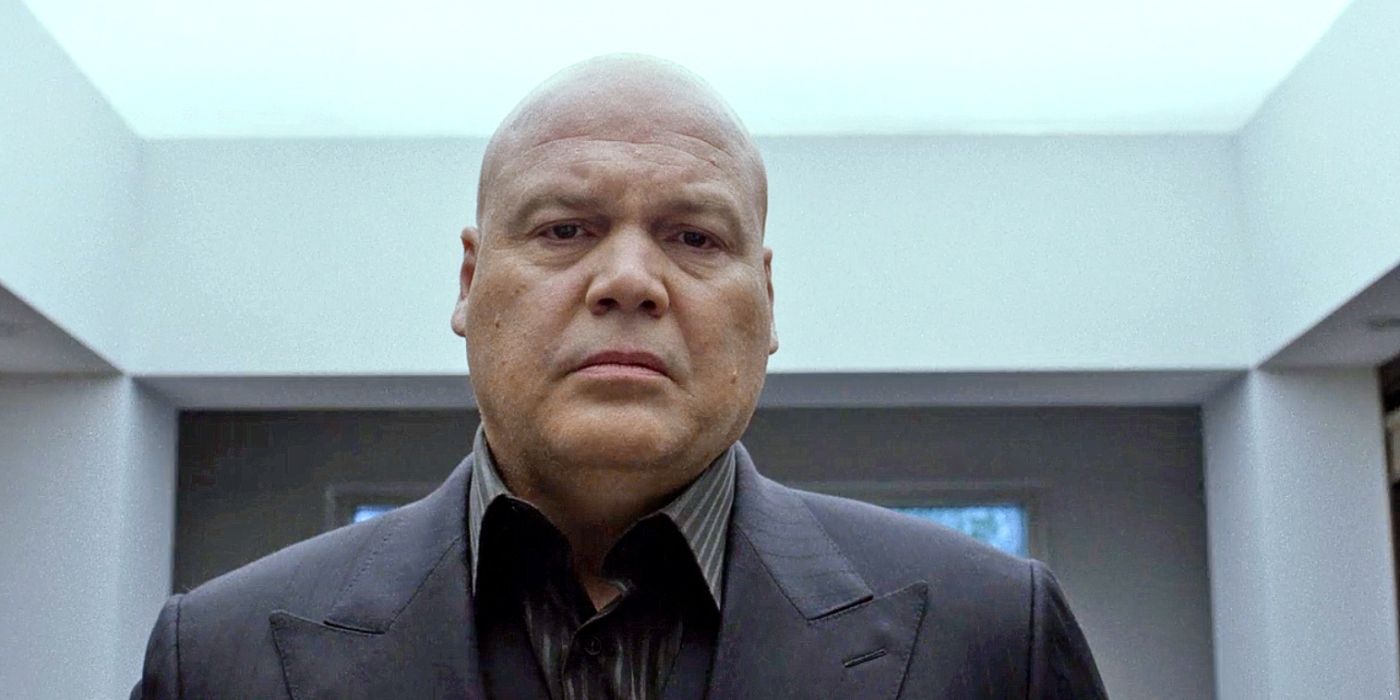WARNING: The following contains spoilers for Spider-Man: No Way Home and Hawkeye, streaming now on Disney+.
The Kingpin is the signature villain of the New York underworld, and as such, he has been a nemesis of all the street-level heroes from the Marvel Comics who make their home in the Big Apple. Originally a Spider-Man adversary, he later became a target of the Punisher, but his biggest battles with the largest stakes over the most significant period of time have all involved Daredevil. During its Netflix run, Daredevil portrayed Wilson Fisk as a fierce criminal mastermind prone to murderous outbursts who operated from the shadows while manipulating the legitimate and illegitimate levers of power.
His debut in the official Marvel Cinematic Universe on the penultimate episode of Hawkeye's first season came the same week as Charlie Cox's version of Matt Murdock appeared in Spider-Man: No Way Home. But while the move seemed to fold the show into the greater Marvel umbrella, a new theory hypothesizes that the Kingpin from the Netflix show is not the same character as the one in Hawkeye due to issues surrounding their comparative power levels, emotional maturity and fashion sense.
In Daredevil, the Kingpin initially held a stature befitting Voldemort as one who may not be named lest any of his minions or associates face his uncompromising wrath, but as the Man With No Fear begins to come into his own and unravel the connections between his prey and the city's apex predator, the name becomes synonymous with power. As Kingpin unleashes on his foes he is depicted more or less as a physically impressive man with a mixed martial style comprising boxing, judo and sumo wrestling. He takes on the likes of the Punisher and Daredevil himself and can hold his own against either through sheer endurance and brute strength, but all within the context of UFC combatants. There is an indelibly memorable and brutal scene where Fisk takes a man's head and places it on the foot ledge of an SUV's open back door then proceeds to slam it shut repeatedly and viciously, muddling the man's skull to paste.
Hawkeye's version depicts Fisk ripping a car door completely from its hinges to extricate a person of interest and shortly after that same car rams into him at high speed, launching him through a glass window, he recovers with no trace of blood or visible physical damage. While battling Kate Bishop he tosses her across a room as if she were made of sticks and plucks arrows from his body like oversized irritants. Moving through the paces with her like the Juggernaut she finally detonates her entire arrow cache directly underneath him, including the highly explosive one labeled "too dangerous," and the end result after the conflagration dims and the dust settles is Fisk limping through the streets, again relatively unharmed.
After fistfights with non powered individuals like the Punisher and Daredevil, Fisk was leaking blood from every orifice and laceration caused by things as simple as window glass. There is certainly a visual aspect that informs this discrepancy that may have nothing to do with either show's actual representations of durability and more to do with the overall tone of each show. The Netflix shows of Daredevil, Jessica Jones, Luke Cage, Punisher and Iron Fist were all much more graphic and intended for adult audiences while Hawkeye is a seasonal action adventure that never delves too deeply into moral vagaries or intense violence. In that vein, Fisk walking away from an explosion is more akin to Wile E. Coyote than his time in Netflix's Hell's Kitchen and serves the same purpose. His vast upgrade in strength, however, doesn't seem to fall into the same bucket of thematic distinction and trends towards the idea of this version being an alternative to the one previously showcased.
The aforementioned pulping of a man's head came about because Kingpin was embarrassed by the way his associate handled a public meeting between the two of them. Extremely private and prone to insult, Fisk wasted no time in rendering said associate into roadkill as a result of the perceived slight and intrusion in the life that he has set aside from his criminal activities. Though it does not follow the exact set of stakes and circumstances, the idea that this same thin-skinned emotionally combustible alpha would name a front Fat Man Auto Repair, seem unlikely. As noted earlier, this could be an effort to foreshadow Kingpin's involvement and simultaneously reflect the lighter tone of Hawkeye versus Kingpin's other on-screen depictions.
Lastly, Fisk shows up in the finale a far cry from the dapper three-piece attire he flaunted throughout the Netflix run. Clad in a bright white leisure suit emphasized with a scarlet Hawaiian shirt and fedora, he comes across as a man that doesn't take himself too seriously and nothing could be further from the truth considering how he viewed himself during his Daredevil days. The suit does, however, harken to a specific Spider-Man reference -- Spider-Man: Family Business, written by Mark Waid and James Robinson and illustrated by Werther Dell'Edera and Gabriele Dell'Otto, where Peter finds out he has a possible sister. The costume reference could be a choice by the creative team rooted in an aesthetic preference in how to present Kingpin in this iteration, or maybe it is meant to denote the familial aspect of both properties. In Hawkeye, Clint establishes a very close relationship with Kate Bishop, taking her on as somewhat of an adopted daughter. In Family Business, Kingpin tricks a CIA agent into thinking that she is Peter's long lost sister Teresa, and the two of them circle the globe trying to find out the truth about their past while Peter keeps her at arm's length, suspicious of her claims.
Kevin Feige's recent statements seem to confirm that the Netflix show is now canon, but when reviewing the actual statement he made to Cinemablend, it seems he left a lot of wriggle room. Prior to the No Way Home reveal, he said, "If you were to see Daredevil in upcoming things, Charlie Cox, yes, would be the actor playing Daredevil. Where we see that, how we see that, when we see that, remains to be seen." This is just loose enough to suggest that while Charlie Cox will be playing Daredevil and Vincent D'Onofrio may be Kingpin, it doesn't mean that they are the Kingpin and Daredevil from the Netflix series. Considering that the MCU has such a bevy of incredibly powerful characters, Fisk may have leveled up to compete proportionate to that scale, which would give additional credence to the idea that the grittier Netflix shows do indeed exist in a darker timeline, and the two characters that were recently introduced are better suited to the increasingly cosmic and often lighter-hearted MCU.
To see Wilson Fisk let loose, Hawkeye is streaming now on Disney+.



